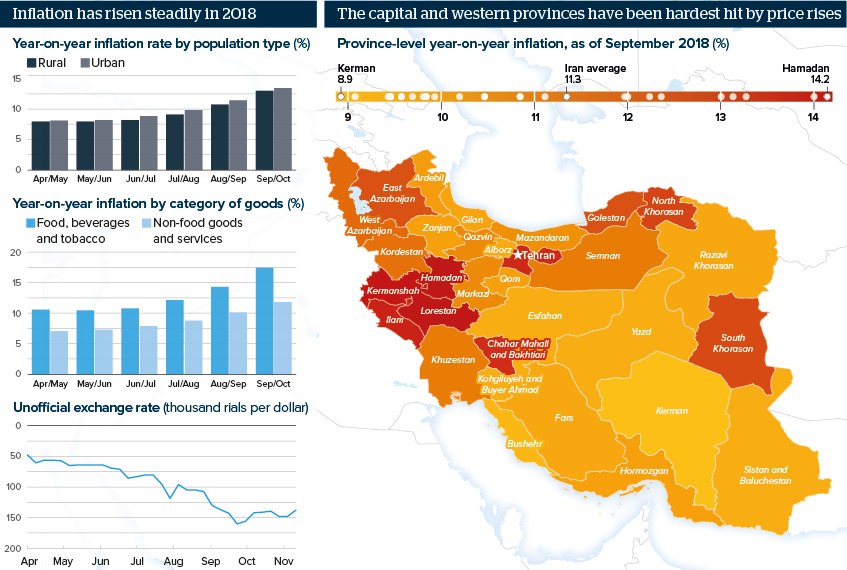Iran’s unrest may focus on central and western cities
Prices increased in anticipation of renewed sanctions, with Tehran and western provinces being the worst affected
Source: Statistical Centre of Iran, Bonbast
Outlook
Inflation rose rapidly prior to the November 5 reimposition of US sanctions on oil exports. This was largely driven by a depreciation of the rial, which fell from 41,000 to the dollar at the beginning of 2018 to around 160,000 to the dollar in late September.
Urban households have consistently seen the largest price rises. This may be attributable to differences in goods baskets between rural and urban communities. Hamadan and Lorestan provinces are witnessing the highest inflation rates. Both saw substantial protests over living costs in December 2017 and January 2018. The Islamic Revolution Guard Corps was dispatched to these two provinces to quell ‘sedition’.
The rial rallied slightly in October, bolstered by expectations of sanctions waivers for major oil export markets, which may reduce inflationary pressures temporarily.
Impacts
- Revenues are expected to decline and will -- in combination with excess money supply -- cause further spikes in inflation.
- Increased living costs will drive more protests, which are likely mainly to affect urban areas, especially in central and western regions.
- However, a strong security response will ensure that protests do not threaten government stability.
See also
- EU-Iran payment scheme to focus on humanitarian trade - Jan 8, 2019
- Prospects for Iran in 2019 - Nov 9, 2018
- More graphic analysis
